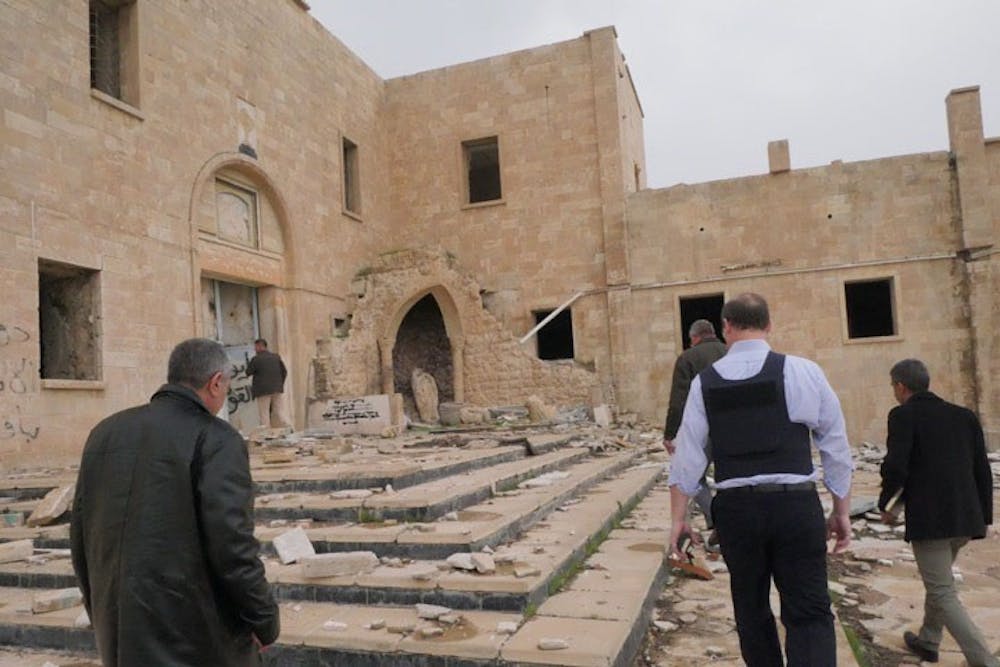A Penn team is leading a weeks-long effort to preserve cultural heritage in Mosul, Iraq after the United States Department of State granted $2 million to the University.
Part of the group of Penn Museum faculty and Near Eastern Languages and Civilizations professors will be in the region until early February as part of the three-year project called the Mosul Heritage Stabilization Program. The initiative hopes to restore and conserve the city and its culture after the Islamic State destroyed important cultural sites of minority groups, such as Christians and Yazidis.
The first part of the project, which is currently underway, aims to assess the conditions of 15 to 20 sites and implement any emergency repairs immediately. After six months, the team will recommend the U.S. government take on longer-term projects to repair and conserve certain sites.
The overarching goal of the project is to encourage minority communities who were pushed out of Mosul to return to the area, along with restoring part of the traditional diversity of the city’s population, project leader and Penn archaeologist Richard Zettler said.

NELC professor Heather Sharkey, who studies religious and minority groups in the Middle East, said Penn is an ideal institution to take on the project.
“The range of expertise that we have in the Penn Museum and the level of historical engagement in this region, especially in archaeological work and conservation, is unrivaled. This is an area where Penn truly excels,” Sharkey said. “The fact that the U.S. State Department awarded this grant to Penn signals their recognition of our excellence in this field.”

RELATED:
Penn Museum's refugee and immigrant tour guides inspire deeper interest in Middle East
Penn Museum takes steps to protect its 1 million artifacts as HUP construction proceeds
In November 2018, the group surveyed the area for 10 days and saw damage to Christian churches and monasteries in east Mosul. The team also saw the damage inflicted on the leaning minaret of the Great Mosque of al-Nuri.
Zettler recalled that the damage to the entire complex was catastrophic and estimated its preservation will cost $40 to $50 million, an amount that well exceeds the $2 million grant Penn received.
The United Arab Emirates government will lead the preservation effort, Zettler said.
Michael Danti, who received a Ph.D. in anthropology from Penn in 2000, is the project manager and a Penn Museum scholar. Danti said he was shocked by the amount of work that has yet to be done.

The al-Nuri mosque dates to the 12th century. (Photo from Richard Zettler)
“I have never seen anything like Mosul in terms of destruction,” Danti said. “It’s been two years or more since the Islamic State was driven out of Mosul and in some cases when we enter churches and mosques, virtually nothing has been done since the Islamic State has left those buildings.”
Danti said the conservation project may also be a slow process. As the Islamic State has stolen most of the equipment the Iraqi engineers and architects use, it will be challenging to assess architectural plans and the stability of building structures.
While Sharkey said the goal is ambitious and desirable, it is unclear if people who left northern Iraq or Syria would return to their original homes, where their families resided for generations.
“The question is, can the restoration of some sites actually bring communities back?" Sharkey said. "What will be the incentives for communities to return?"









